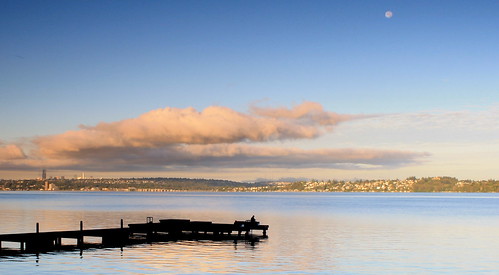
“IT’S ALL ABOUT ME!”
Eat Your Handlebars!
 |
| Eat your Handlebars! |
Many Bicycle Alliance members are acquainted with Andy Goulding, husband to our Executive Director Barb Culp. Andy is a man of many talents and, several years ago he focused his creative energies on creating an energy bar for hungry cyclists–Handlebars! He has graciously agreed to share his Handlebar recipe with us. Thank you, Andy!
Handlebar Recipe
(It’s not cooked!)
1 very huge spoonful of organic peanutbutter
1 very huge spoonful of organic honey
1 very huge spoonful of organic flax meal
1 cup of organic raisins
1 cup of organic granola
Smash in non-stick organic pan.
Refrigerate,then eat your Handlebars!
PROS to Benefit the Bicycle Alliance
 |
| Sketch by Andy Goulding. |
If you’re hanging out around Seattle this holiday weekend and you’re looking for a bike ride on Labor Day, consider PROS.
PROS: Perimeter Ride of Seattle was founded by Gary Strauss and Dan Wakefield of Cyclists of Greater Seattle (COGS) in 2005 and is modeled on other perimeter rides, like El Tour de Tuscon. You will see the City of Seattle from all sides on this 80-mile ride and get incredible views of Puget Sound, Lake Washington, the mountains and cityscapes. A PROS Lite (56 miles) is also offered. The ride is organized by COGS and this year, they will collect donations for Washington Bikes to support our advocacy and education efforts.
Bicyclists Appreciate the ADA – Thanks to the Bushes!
| Navigating a curb midblock in Pioneer Square. |
I’m a bike advocate, temporarily disabled. I usually find myself talking to elected officials or policy makers about complete streets where everyone has access to our roads and sidewalks. But in a moment of weird coincidence, on the twentieth anniversary of the Americans with Disabilities Act (ADA), I fell off my bike and fractured my pelvis. (See previous blog post for that story.)
Cloud Creep
I took these pictures on my morning commute in the order I present them below. Notice the clouds slowly creeping in.

Juanita Bay Park, Kirkland, about 6:45 am.

David E. Brink Park, Kirkland, about 7:00 am.

Seattle end of the I-90 bridge, about 8:00 am.
OK, this last one would have been awesome — the Cascades off to the left, Mt. Rainier dead ahead, possibly some sailboats out there — except that by the time I got across the bridge, dark ominous clouds had rolled right in and hidden all those pretty views. Instead, I saw an increasing number of bicyclists in neon yellow rain jackets, always a good predictor of rain.
Fortunately, rain doesn’t deter Seattle bike commuters. We may come out in droves for the gorgeous, sunny weather that has blessed the region lately, but precipitation and cloudy conditions won’t stop us. We just turn on those blinking lights, slap some more reflective tape everywhere, and don our bright-colored waterproof jackets. Autumn, come on — make our day. We’re ready.
Note: The above post was written August 26. The commute on August 31 threw down the gauntlet, presaging the weather to come.
Bikes and Buses, Part 2: Bike Parking
Kristin Kinnamon of Community Transit is a bike commuter, bike advocate, and sits on Washington Bikes’s Board of Directors. She wrote this article for the Community Transit blog and we would like to share it with you:
It’s all about the bike rack
As more folks hop on their bikes to run errands, shop and go places–and Dave Shaw’s June blog post clearly illustrates this is happening–the demand for bike parking increases. And the type of bike parking I’m referring to is the basic bike rack.
I’m not talking about those old “wheel bender” bike racks like this one in a school yard
Although both of these bike racks see regular use due to their locations, neither of them provide adequate support for the wheel and frame, and they are problematic to secure front wheel and frame with a u-lock. (Secure your front wheel to the bike rack if it has a quick release. I’ve seen way too many bikes missing their front wheels at bike racks.)
The kind of bike rack I’m talking about is conveniently located to my destination and allows me to easily secure my front wheel and frame to the bike rack. This “hitching post” type of rack is located in front of one of my favorite coffee shops in Seattle, and there’s always a bike or two or three locked up to it.
This style of rack is popular in busy urban areas. Its slim profile allows it to fit nicely on sidewalks, and it’s easy to lock your front wheel and bike frame to the rack with a u-lock.
| Secure front wheel and frame to rack. |
| Good rack but poorly secured bike. |
I like the “staple” and “hitching post” racks for their functionality, but they have an industrial look to them. Bike racks can be functional and esthetically pleasing. This bike rack in downtown Redmond has a slim profile, is functional, and beckons the traveling cyclist. Although this bike is only secured through the frame, it could easily have been locked through the front wheel and frame.
Here are two other bike rack designs that are commonplace. One features a “coat hanger” for attaching your bike; the other has an undulating appearance like a snake or ribbon. Since these racks require more space, you don’t often see them on sidewalks.
| Photo by Eileen Hyatt |
Here’s an interesting and colorful bike rack at a Spokane pizza parlor. It incorporates old bike frames into the design–recycling at its best! Again, this is a design that supports the wheel and frame, and allows both to be locked to the rack.
This final bike rack sits outside a professional building in Redmond and houses–you guessed it–four dental offices.
If you use your bike for transportation, it’s helpful to know what constitutes a good bike rack. Someday, you might find yourself approaching a business or your workplace and asking them to install a bike rack for your use. You can find Bicycle Parking resources on Washington Bikes’s website, including our Shop by Bike Retailer’s Guide to Effective Bicycle Parking.
Bikes and Buses, Part 1: Bike Racks
Kristin Kinnamon works for Community Transit in Snohomish County. She is also a bike commuter and sits on Washington Bikes Board. She recently wrote this post for the Community Transit blog that we would like to share with you:
Whose Streets?
While citizens in Seattle launch their Streets for All campaign, a Vancouver resident is pushing a Take Back the Streets initiative which would prioritize city streets for motor vehicle use. According to The Vancouver Voice:
East Vancouver resident Mike Grosenbach is seeking help to start a “Take Back Our Streets” petition for an initiative prioritizing city streets for motor vehicle use. Key aspects of his draft initiative include requiring pedestrian and cyclists to yield right-of-way to motor vehicles at all times and prohibit converting on-street car parking to any non-car parking use.
 |
| pedbikeimages.org/Laura Sandt |
Grosenbach goes on to vent his anger about cyclists–that they take up more than their share of road space and funding. He claims that bicyclists are “basically stealing everyone else’s right to the road.” Read Marcus Griffith’s full post.
Sound familiar? Feel like deja vu? Just as President Obama’s religious views (he’s Christian) and citizenship (US citizen) are regularly questioned, we as bike advocates must routinely defend our right to the road.
Bicycles are Vehicles
Bicycles are recognized as vehicles in Washington State, and have the same rights and responsibilities as other vehicles on the road. This means that, with few exceptions, you and I have a right to travel by bike on our roads and, if necessary, take a lane of traffic for our safety. This also means that we are expected to stop at stop signs and red lights, yield to pedestrians, and ride with other traffic–not against it. You can find more information about laws related to biking on Washington Bikes website.
Everyone pays for Roads
This may come as a shock to the anti-bike crowd, but most bicyclists also own and/or drive motor vehicles. (We own a car in my household.) That means most cyclists are paying road fees too!
More shocking news: Americans pay for roads whether or not we own or drive vehicles! Registration fees, gas taxes, tolls and other user fees don’t cover the costs of building and maintaining roads, so we subsidize our roads with other funds. An analysis by Subsidyscope reveals that in 2007, road user fees and taxes covered only 51% of the costs. The other half is subsidized by non-user tax sources and borrowing through bond measures.
Most shocking: Bicyclists and pedestrians pay a disproportionately higher amount for our share of the road! According to Todd Litman’s report for the Victoria Transport Policy Institute:
On average, local and regional governments spend $300-$500 annually per automobile in general taxes on local roads and traffic services, averaging more than 6 cents per mile driven on local roads. Only 0.7 cents of this is paid through vehicle user charges, meaning that driving is subsidized through general taxes by about 5.6 cents per mile. Automobiles also impose other external costs, including parking subsidies, congestion and crash risk imposed on other road users, and environmental damages. Pedestrians and cyclists tend to impose lower costs than motor vehicles and bear an excessive share of these costs, particularly crash risks, because they are unprotected. A shift from driving to bicycling and walking reduces external costs, providing benefits to society, such as road and parking facility savings, reduced crash risk and congestion delay imposed on other users, and reduced environmental impacts. This indicates that non-drivers pay more than their share of transportation costs.
Please take the time to read the reports cited above so you understand the information. The next time someone tells you that cyclists don’t belong on the road or don’t pay their fair share, you will be equipped to respond objectively.
Now let’s take back our share of the streets.
Mr. Smith Goes to Olympia

Bicycle Alliance Board Adopts 2011 Legislative Agenda
Traffic safety education—require that the driving schools attended by motorists who have received a traffic ticket teach the Department of Licensing’s approved curriculum for safe driving around cyclists and pedestrians. Such legislation was introduced during the 2010 session, but died without final action.
Mutual courtesy and safe passing—clarify the laws that define safe and courteous behavior for cyclists and motorists, including legislation governing how much space motorists should give cyclists when passing alongside them.
Complete streets—create a framework for a grant program to create incentives for communities that adopt a “complete streets” policy to ensure that their streets are designed and built to accommodate cycling and walking. A “complete streets” bill was introduced during the 2010 session, but died without final action.
Lower speed limits—Give communities broader authority to lower speed limits to 20 miles an hour in neighborhoods with high pedestrian and bicycle traffic. Studies in Europe have shown that lower speed limits sharply reduce injuries and death.
Liability—Impose reasonable limits on the liability of communities that sign bicycle routes or produce bike maps. Currently, some communities don’t mark or map routes at all because they fear they will be found liable for injuries suffered by cyclists who use the routes.



